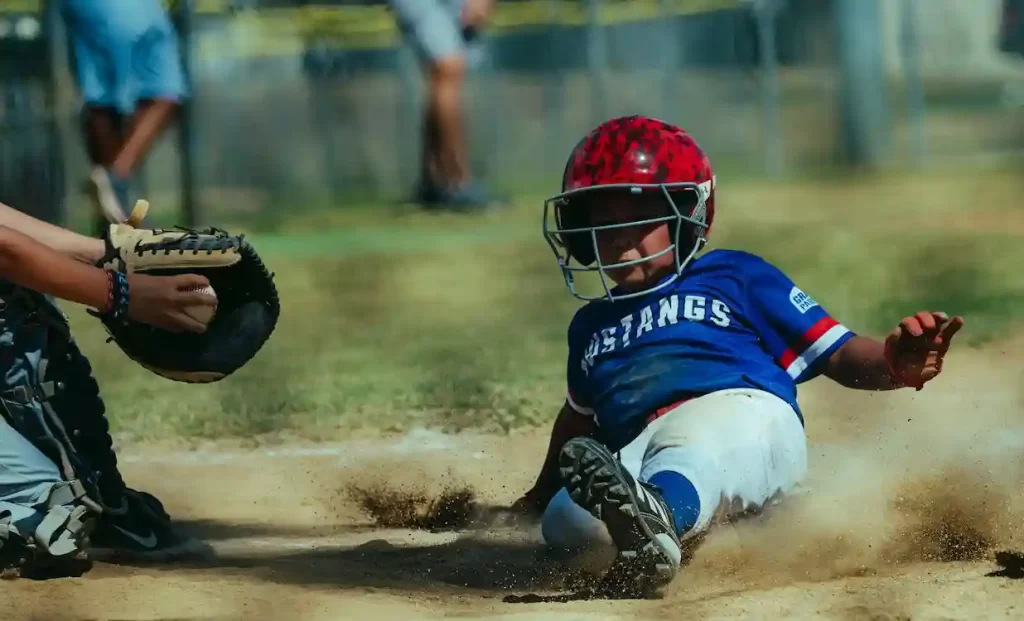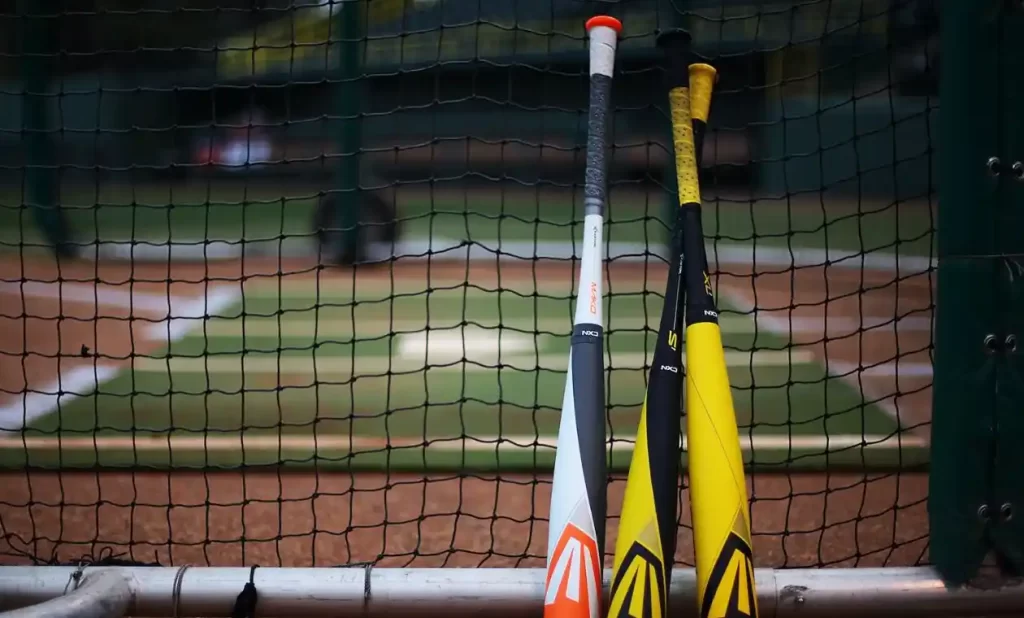
Baseball is a game of precision, strategy, and agility. It’s a sport where every inch can make a difference between an out and a safe play. One crucial aspect of baseball that often separates the good from the great is the art of sliding. Sliding is not just a skill; it’s a strategy, a technique that can turn the tide of a game in your favor. Whether it’s stealing a base, avoiding a tag, or diving for a catch, knowing how to slide can be a game-changer.
But how do you master the art of sliding in baseball? How can you ensure your slides are not just effective but also safe? This is where sliding mats come into play. These mats provide the perfect surface for practicing your slides, honing your skills, and minimizing the risk of injuries.
In this comprehensive guide, we’ll explore everything you need to know about using sliding mats for baseball. From understanding the art of baseball slides to choosing the right mat and incorporating drills, we’ve got you covered. So, whether you’re a seasoned player looking to refine your technique or a beginner taking your first steps in the world of baseball, this guide is for you.
The Art of Baseball Slides
The Significance of Sliding in Baseball
Sliding in baseball is not merely an embellishment to the game; it’s a fundamental aspect of the sport. It’s a skill that players of all levels must master to excel on the field. But why is sliding so important in baseball?
- Avoiding Tags: Sliding is a primary method of avoiding tags, especially when trying to steal a base or make it back to a base safely. A well-executed slide can evade the tag and keep you in the game.
- Reaching Bases: Sliding is also crucial when trying to reach a base before the opposing team’s throw or tag. It allows you to extend your reach and increase your chances of being safe.
- Catching Balls: In the outfield, sliding can be the difference between making an incredible diving catch and letting the ball slip past. Sliding helps you maintain control and make the catch.
Types of Slides
In baseball, you’ll encounter different types of slides, each with its specific use:
- Feet-First Slide: This is the most common type of slide. Players slide feet-first to reach a base quickly and safely. It’s the preferred slide when stealing a base.
- Head-First Slide: In certain situations, like when diving back to a base or extending your reach to make a play, a head-first slide is employed. It can be more daring but effective when executed correctly.
- Pop-Up Slide: This is a combination of a feet-first slide and a quick pop-up to gain a better position. It’s often used when sliding into home plate.
The Advantages of Mastering Baseball Slides
Mastering the art of sliding in baseball offers several advantages:
- Safety: Proper slides minimize the risk of collisions and injuries, protecting both the runner and the fielder.
- Base Stealing: Sliding is an essential skill for base stealers, allowing them to reach the base quicker and more securely.
- Agility: Sliding enhances your overall agility and quickness on the field.
- Versatility: Proficient sliding opens up various playing opportunities, from stealing bases to making crucial plays in the field.
Benefits of Sliding Mats
The Role of Sliding Mats in Player Development
You’ve learned about the importance of sliding in baseball, but what role do sliding mats play in enhancing player development? Sliding mats are a vital tool that can significantly improve your sliding technique and overall performance on the field. Here are some key benefits:
- Enhanced Sliding Technique: Sliding mats provide a smooth and forgiving surface that replicates the feel of real grass or dirt on the field. This allows you to practice your slides with confidence, refining your technique and building muscle memory.
- Reduced Risk of Injury: Safety is paramount in baseball, and sliding mats offer a controlled environment for practicing slides. With reduced friction and impact, these mats minimize the risk of abrasions and injuries associated with sliding on harder surfaces.
- Increased Confidence: Practicing on sliding mats builds your confidence as a player. When you know you can execute a slide effectively, you’re more likely to attempt advanced plays and take calculated risks on the field.
- Consistency: Sliding mats provide a consistent surface, eliminating the variables that outdoor conditions can introduce. This consistency helps you perfect your slides under various circumstances.
Professional Baseball Players and Sliding Mats
Professional baseball players often utilize sliding mats as part of their training regimen. They understand that perfecting sliding techniques can be a game-changer. Whether it’s a rookie aiming to make a mark or a seasoned player looking to maintain their skills, sliding mats play a crucial role in their development.
Sliding mats are an investment in your progress as a baseball player, helping you develop essential skills that can elevate your game. In the next chapter, we’ll guide you on choosing the right sliding mat for your needs. If you have specific points to include or any preferences, please let me know, and I’ll continue with the next section.
Choosing the Right Sliding Mat
Choosing the right sliding mat is a pivotal step in your journey to mastering the art of baseball slides. With various options available, it’s essential to make an informed decision to ensure your practice sessions are effective and safe.
Types of Sliding Mats
There are different types of sliding mats designed to cater to various needs:
- Full-Length Sliding Mats: These mats provide ample space for full-body slides, replicating game scenarios effectively. They are ideal for players who want to practice a range of sliding techniques.
- Base-Length Sliding Mats: Smaller in size, these mats focus on base-specific sliding practice. They are perfect for fine-tuning base stealing and base-protecting slides.
- Convertible Sliding Mats: Some mats offer versatility by allowing you to adjust their size to accommodate different sliding needs.
Key Considerations
When choosing a sliding mat, consider the following factors:
- Size: Determine the space available for your mat and whether you need a full-length or base-length mat.
- Material: Look for mats made from durable materials that mimic the feel of real grass or dirt.
- Durability: Ensure the mat can withstand regular use and offers long-lasting performance.
- Portability: Some mats are easy to transport, making them suitable for home practice or on-the-go training.
- Price: While quality is essential, consider your budget when selecting a sliding mat.
Professional Recommendations
Professional baseball players often share their preferences for sliding mats. Their insights can guide you in making an informed choice, aligning your selection with your specific training goals.
Using Sliding Mats Effectively
Mastering the Art of Sliding with Sliding Mats
Now that you’ve chosen the right sliding mat, it’s time to learn how to use it effectively. Sliding mats offer a controlled environment for refining your sliding techniques and building confidence. Here’s a step-by-step guide on how to make the most of your sliding mat:
Proper Attire: Before you begin, ensure you’re wearing the right attire. Opt for baseball pants or sliding shorts, as they are designed to minimize friction and allow for smooth slides. You can also use sliding sleeves or sliders to protect your legs.
Set Up the Mat: Place your sliding mat on a suitable surface, preferably on grass or turf. Ensure it’s secure and won’t move during practice. The mat’s surface should mimic the feel of real playing conditions.
Warm-Up: Like any other aspect of baseball, warming up is essential. Perform some light stretches to prepare your body for sliding. Focus on your legs, hips, and core to ensure flexibility and reduce the risk of injuries.
Practicing the Slide:
Here’s a basic drill to start with:
- Stand a short distance away from the sliding mat.
- Take a few quick steps and initiate your slide as you approach the mat.
- Execute a controlled and balanced slide, aiming to stop within the mat’s boundary.
- Focus on proper form, keeping your body low and your legs extended.
Repetition and Variation: The key to mastering sliding is repetition. Practice the slide repeatedly, making small adjustments each time to improve your technique. Experiment with different types of slides, including feet-first and head-first, to become a versatile slider.
Video Analysis: Recording your practice sessions can be incredibly beneficial. Use a smartphone or camera to capture your slides. Review the footage to identify areas for improvement, such as body positioning and timing.
Speed and Agility: As you become more comfortable with sliding, work on increasing your speed and agility. Challenge yourself to perform quick slides to different bases or react to varying game situations.
Safety First: While sliding mats offer a safer practice environment, always prioritize safety. If you experience any discomfort or pain while sliding, take a break and assess your technique to prevent injuries.
Consistency: Consistency is the key to mastery. Regularly practice your slides on the sliding mat to build muscle memory and improve your sliding skills.
Drills and Exercises
Elevate Your Sliding Skills with Targeted Drills
Mastering sliding in baseball goes beyond practicing the same slide repeatedly. To become a well-rounded player, it’s essential to incorporate a variety of drills and exercises into your sliding mat practice sessions. These drills can help you improve your agility, balance, and reaction time, ultimately making you a more versatile and confident slider.
Cone Drills: Set up a series of cones on the sliding mat, creating a zigzag pattern. Practice sliding around the cones, mimicking the movements required to avoid tags or reach a base safely. This drill improves your agility and ability to change direction quickly.
Reaction Time Drills: Have a coach or partner call out different scenarios (e.g., “steal second,” “tag-up and advance to home”). React to the calls by initiating the appropriate slide. This exercise helps you develop quick decision-making skills and enhances your reaction time.
Pop-Up Slide Practice: The pop-up slide is a crucial skill for sliding into home plate safely. Set up a target or home plate at the end of the sliding mat. Practice your pop-up slides to reach the target with precision. This drill improves your ability to pop up swiftly after a slide.
Tag Avoidance Drills: Have a coach or teammate stand near the sliding mat with a soft pad or glove. As you slide, they attempt to apply a “tag.” Your goal is to avoid the tag by executing a well-timed and precise slide. This drill enhances your tag-avoidance skills.
Game Situation Drills: Simulate real-game situations on the sliding mat. For example, practice slides into second base as if you’re stealing, or practice sliding back to the base after a pick-off attempt. These drills help you prepare for in-game scenarios.
Head-First Slide Drills: If you’re comfortable with head-first slides, incorporate drills that focus on perfecting this technique. Work on your approach and execution to ensure safe and effective head-first slides.
Feet-First Slide Drills: Similarly, if you prefer feet-first slides, dedicate time to perfecting this technique. Focus on sliding low and extending your legs for maximum reach.
Video Analysis: Continuing with video analysis, record your practice sessions incorporating these drills. Review the footage to identify areas for improvement and track your progress.
Consistency and Repetition: As with the basic slide practice, repetition is essential. Consistently incorporate these drills into your sliding mat sessions to build muscle memory and improve your sliding skills.
By incorporating a variety of drills and exercises into your sliding mat practice, you’ll become a more versatile and confident slider, ready to excel on the baseball field.
Safety and Maintenance
Safety and maintenance are essential aspects of using sliding mats effectively. Practicing sliding on a well-maintained mat not only keeps you safe but also extends the mat’s lifespan, ensuring that it serves you well for years to come. Here are some safety measures and maintenance tips to consider:
Safety Measures
- Protective Gear: Always wear the appropriate protective gear, including baseball pants or sliding shorts. These garments minimize friction and reduce the risk of abrasions.
- Warm-Up: Before every practice session, engage in a thorough warm-up to prepare your muscles and prevent injuries.
- Awareness: Be aware of your surroundings. Ensure that the practice area is free of obstacles and hazards to avoid accidental collisions.
- Proper Technique: Use correct sliding techniques to minimize the risk of injuries. Work on your balance and control during slides.
- Injury Assessment: If you experience discomfort or pain while practicing, stop immediately and assess the situation. Address any potential injuries promptly.
Mat Maintenance
- Clean Regularly: Clean your sliding mat after each practice session. Use a soft brush or cloth to remove dirt, debris, and moisture.
- Storage: Store the mat in a dry and cool location, away from direct sunlight or extreme temperatures.
- Inspect for Wear: Regularly inspect the mat for signs of wear and tear. Check for any damage or weak spots that may require repair or replacement.
- Repair Tears: If you notice any small tears or damage, repair them promptly using a suitable adhesive or patch to prevent further deterioration.
- Rotate the Mat: To ensure even wear, periodically rotate the mat if it’s placed in a specific direction.
- Replace When Necessary: Sliding mats have a limited lifespan. If you notice significant wear or damage that affects their performance, consider replacing them.
By following these safety measures and maintenance tips, you can ensure safe sliding practice and prolong the life of your sliding mat.
Conclusion
This guide has shed light on the art of mastering baseball slides with the assistance of sliding mats. We’ve emphasized the paramount importance of sliding in baseball, from its role in avoiding tags to reaching bases with precision and making remarkable catches in the outfield.
Sliding is not merely a skill; it’s a game-changer that can tip the scales in your favor. The art of sliding goes beyond just practicing on the field; it necessitates the use of sliding mats, which offer the ideal surface for safe and effective practice sessions. These mats not only enhance your sliding technique but also reduce the risk of injuries, allowing you to practice with confidence.
As you’ve journeyed through this guide, you’ve learned how to select the right sliding mat for your needs, ensuring that it suits your practice space and aligns with your goals. You’ve delved into the world of drills and exercises that can elevate your sliding skills, making you a more agile, versatile, and confident player.
Moreover, you’ve embraced the significance of safety and maintenance, understanding that these aspects are essential for both your well-being and the longevity of your sliding mat.
Now, it’s your turn to step onto the field and put your knowledge into action. Whether you’re a seasoned player looking to refine your skills or a beginner embarking on your baseball journey, sliding mats provide the platform to practice and improve. Elevate your game, perfect your slides, and challenge yourself to be the best player you can be.
So, with a sliding mat in hand and protective gear on, it’s time to start your journey to becoming a master of baseball slides. The field awaits, and your newfound skills are ready to shine. Best of luck, and remember that practice makes perfect. Embrace the art of sliding, and watch as it transforms your performance on the baseball field.
Sliding Mats FAQs
[sp_easyaccordion id=”879″]

Meet Daniel Anderson, the heart and soul behind Baseball Pro Picks. At 49, Daniel’s life has revolved around baseball, a passion that’s as strong today as it was when he first fell in love with the game. Living in the USA, Daniel has dedicated countless hours to watching, analyzing, and understanding every pitch, hit, and home run, making almost no game missed. His deep-rooted love for the sport is matched only by his commitment to sharing insightful, expert analysis with fellow baseball enthusiasts. With decades of experience and a keen eye for the game’s nuances, Daniel brings a unique perspective that enriches Baseball Pro Picks. Trust Daniel to guide you through the intricacies of baseball with the authority and trustworthiness of a true aficionado.












